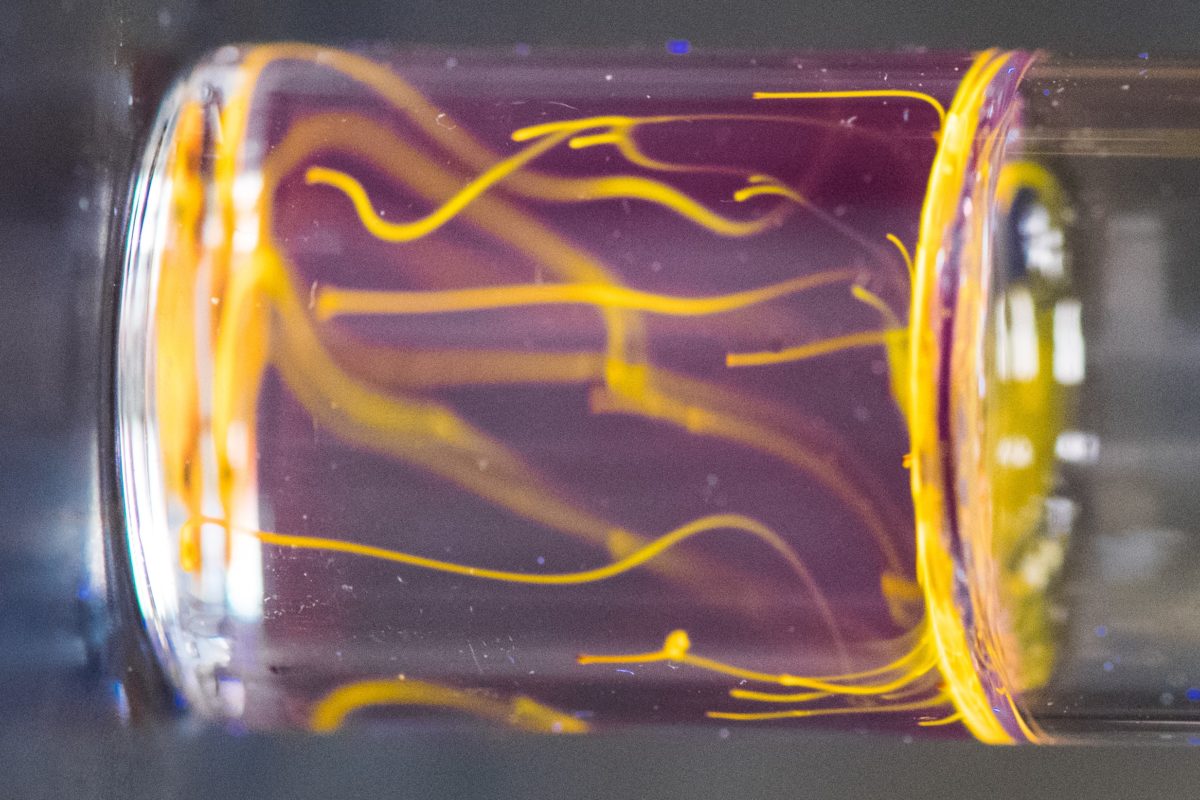Singlet fission (SF) is a “two for one” mechanism whereby one photon (light particle) can create two excited states in a semiconductor material, instead of the usual one. The mechanism has been observed in various cell materials, including silicon.
Scientists predict that taking advantage of SF could bring single-junction solar cells beyond their calculated efficiency limit. However, fundamental understanding of the processes behind SF and the development of materials that exhibit it in anything approaching a uniform way are still in the early stages.
At the U.S. National Renewable Energy Laboratory (NREL), scientists have worked on improving this understanding through a trial and error approach of modeling and designing various materials at the molecular level. “The most difficult part was designing molecules in which the fine balance of singlet and triplet energies was achieved,” says NREL postdoc Nadia Korovina. “After about a year of trial and error, we had the right molecules from which we were able to learn the intricacies of the singlet fission process.”
Recombination
One challenge to working with SF is that these dual excited states tend to exist only for a very short time, and will recombine and cease to exist if they come into contact with each other. The splitting process also often loses energy to heat. Korovina and the NREL group worked to determine the ideal molecule length and complexity to minimize these effects and found that a molecular chain of at least three chromophores (the part of a molecule responsible for light absorption) in length is needed to keep the two excitons separated for several microseconds – long enough to draw the charge out into other cell layers. Their research is published in Nature Chemistry, in the paper Spatial separation of triplet excitons drives endothermic singlet fission.
To better understand how these chains of chromophores worked to prevent recombination, the group turned to computational modeling. With a refined model of the particle interactions, the group identified a twisting motion as key to the mechanism. “The molecular chain is usually floppy and flexible … but when it absorbs a photon, the chain twists around its central axis and initially stiffens, resulting in a shape that facilitates the formation of two triplets,” the scientists explain. “The subsequent twisting that occurs after the initial process finishes helps to spatially separate the two triplets, lengthening their lifespans.”
Armed with this understanding of the mechanisms underlying SF, the group says that future development of singlet fission solar cell materials should become much easier.
This content is protected by copyright and may not be reused. If you want to cooperate with us and would like to reuse some of our content, please contact: editors@pv-magazine.com.




By submitting this form you agree to pv magazine using your data for the purposes of publishing your comment.
Your personal data will only be disclosed or otherwise transmitted to third parties for the purposes of spam filtering or if this is necessary for technical maintenance of the website. Any other transfer to third parties will not take place unless this is justified on the basis of applicable data protection regulations or if pv magazine is legally obliged to do so.
You may revoke this consent at any time with effect for the future, in which case your personal data will be deleted immediately. Otherwise, your data will be deleted if pv magazine has processed your request or the purpose of data storage is fulfilled.
Further information on data privacy can be found in our Data Protection Policy.